La bala de plata del marketing para startups

Eodos los días veo a empresarios y vendedores de startups buscando desesperadamente un truco de magia.
Algún tipo de táctica secreta o truco que les haga ganar dinero en un abrir y cerrar de ojos. Como los códigos de trucos de tu videojuego favorito.

Ya sabes, como todas las demás startups a su alrededor.
One little trick and BOOM 💥 — explosive growth as far as the human eye can see.
Why can’t we have that? 🙄
Growth hacks they call them. The internet’s version of black magic.
Chances are you’ve been on a quest to find the secret for a while now 😯.
Chances are you’re looking for such a secret at this very moment 😏.
Chances are you’ve already given up on ever finding the secret 😒.
Chances are you stopped believing the secret existed in the first place 🤔.
Chances are you’re reading this post because the title hints at the secret 😛.
 ¿Te estoy troleando? 🤡
¿Te estoy troleando? 🤡
No. I’m a man of my word. I will show you the secret.
Porque sí, el secreto existe .
But it’s not guarded by one of those growth hacking agencies that keeps on telling you that they’ll launch your startup into the stratosphere 🚀.
If only you would give them a shot.
👉 In exchange for about half your funding 💸 .
They’re not guarding anything. They just want you to believe that you know nothing and they know everything so you’ll give them their money.
En el país de los ciegos, el tuerto es el rey, ¿recuerdas? Esto se llama marketing.

Don’t get me wrong.
Growth hacking is fun. It’s a great way to cut corners and get ahead of the competition 🏎️. You’ll win some ground and maybe, just maybe it’ll even get you some initial traction.
Pero sólo le llevará tan lejos como se lo permita la adecuación de su producto al mercado.
True product-market fit is the one and only way to scale and growth hacking doesn’t hold the secret to getting you that.
El secreto está en ti 🗝️.
As a startup, you’re in the business of solving real-world problems.
You have a unique take on your topic’s problems. You have a unique set of tactics, strategies and approaches to solve those problems.
You have unique value to give ✨. Product — and content-wise.
En algún lugar hay un grupo de personas con los mismos problemas que tú puedes resolver. Un grupo de personas que necesitan tu valor. Su público.
👉 You just need to find that group of people — or have ‘m find you — and give ‘m what they need.
That’s it. That’s your secret 🗝️.
🎈 Giving out your value to the people it’s of value to.
Here’s the thing startups don’t seem to get 👇.
People won’t buy your product because you’ve been working your ass off for four straight years, living off a waiter’s salary, sleeping on a stinking mattress in your friend’s garage.
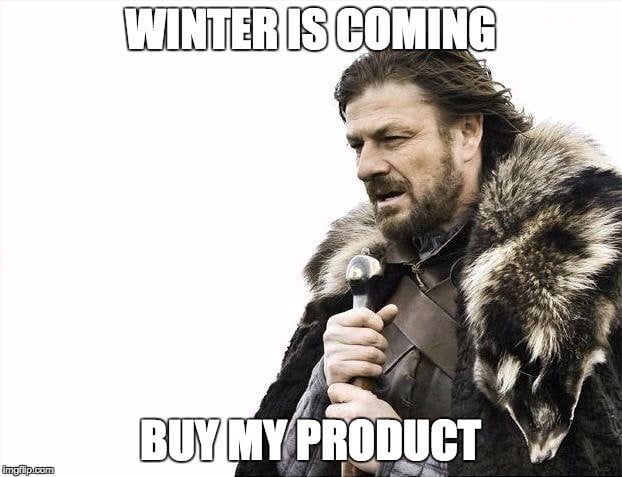
La gente comprará su producto porque les hace la vida mejor.
¿Se pregunta por qué ¿nadie lee las entradas de tu blog?
¿Por qué sólo a tu madre le gustan tus actualizaciones de Facebook?
Why you’re getting so much hate on your cold emails?
Why your website traffic isn’t going up?
¿Por qué ninguno de tus usuarios de prueba empieza a pagar?
Here’s why 👉 A nadie le importa.
Poner tu sangre, sudor y lágrimas en tu producto no hace que te deban nada. Esto es válido para la vida en general.
¿Me estás diciendo que debería centrarme en el producto y olvidarme del marketing? 🤔
No.
I’m telling you to find the people in need of the value you can give them.
I’m telling you to build a strategy around helping people.
I’m telling you to dar prioridad al marketing porque mejorará tanto su producto como su marketing. Y más fácil.
Mejor aún: I’m telling you to put customers first.
TL;DR
- el growth hacking es divertido
- but it won’t sustainably grow your startup
- sólo una verdadera adecuación entre producto y mercado
- el secreto del crecimiento está en ti
- give out value to people it’s of value to
- la gente compra tu producto porque mejora su vida.
- construir una estrategia en torno a la ayuda a las personas
- ponga el marketing en primer lugar
- mejor aún: anteponer a los clientes
9 out of 10 startups fall flat on their faces 🤕
You don’t find customers for your products.
You find products for your customers.
La mayoría de las startups son impulsadas por ideas. Alguien tiene una idea épica y luego los chicos de marketing tienen que encontrar la manera de conseguir que la gente pague por ella.
I get that 👍.
It’s way easier to build a product than to build an audience for it.
You have to talk to a lot less people. There’s nobody to tell you your epic idea is actually shit and your mom is proud of you because you’re chasing your dreams 💭.
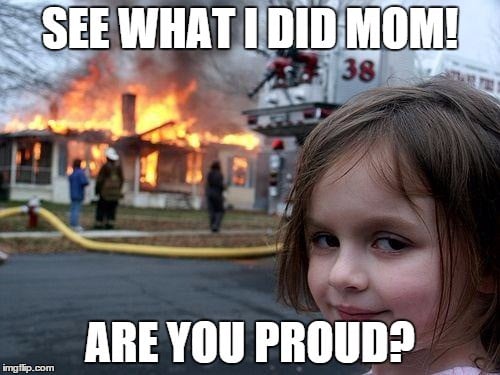
But here’s the thing.
Entrepreneurship is not about you and it’s not about your ‘epic’ idea.
It’s about making people’s lives better. It’s about helping and giving value 💝.
You know what’s even more difficult than building an audience?
Construir un producto con y para un público.
👉 Un producto que aporte valor a la gente. Un producto que atención acerca de 💕.
If people don’t care about your product, reality will catch up with you. Your world will come crashing down. All of your energy, time and money will have been for nothing.
And there’s nothing your mom can do about it 🤷.
9 de cada 10 startups fracasan 💀.
¿Principal causa de la muerte?
Trying to build a product for a group of people that doesn’t exist.

TL;DR
- la gente primero construye productos, luego una audiencia
- but what if people then don’t care about your product?
- dale la vuelta
- Construir primero una audiencia y luego el producto para esa audiencia.
- o acabar muerto como hacen 9 de cada 10 startups.
Mediocre Viable Product 😕
En 2011 Eric Ries arrasó en el mundo de las startups con The Lean Startup.
People hailed it as the Bible of Startups 🙏.
Rightly so. The idea of starting from something small and gradually building it on customer input is probably the quickest way for a startup to find product-market fit 🖇️ and a scalable business model 📈.
If you haven’t read the Lean Startup (you should), here’s the gist of it:
- Build a Minimum Viable Product (MVP) 🎁
- Find out if people will pay money for it 💁
- Use feedback from those people to adapt the MVP up until the point a sustainable group of people will buy it 💰
An MVP is a product that has the minimum set of features to prove the hypothesis that is essential to your idea’s potential to exist.
(Just so we’re straight on that.)
Ahora.
Remember the Product Adoption Curve? 😏

It’s one of those gazillion frameworks they show you in marketing class you instantly forget about. I did anyway 🤷.
The Product Adoption Curve is something all new kids on the block have to go through. Facebook, Slack, Uber and DVDs (still ring a bell? 🔔) — heck, even underwear at some point must have gone through it (hope those do ring a bell…).
Your MVP is meant to win over the innovators and, while you’re at it, the early adopters. The more the merrier, right? 🙌
Innovators and early adopters are the guys that’ll take your product for a spin when it’s still in diapers 👶.
They‘re okay with it still shitting the bed from time to time 💩. They look beyond the bugs and spartan features to see if your product deserves to exist.
They’ll share their findings with the world and, if they like what they see, may end up evangelising your product 😇.
Pero, ¿y si tu MVP es una mierda? 🙃
What if your MVP is so bad the innovators you’re trying to seduce don’t even give it the light of day?
Sure, it’s the bare minimum of your product, but you should still get some traction out of it, right? 🤔
It only takes one to start a fire 🔥 but it takes many to keep the fire burning.
Los MVP están pensados para encender el fuego de las startups, pero a menudo acaban matándolo 💦.
In the early days your startup needs a bunch of passionate, almost religious fans 🙏. People that really dig what you’re doing and are in it for the long haul.
Necesitas que estos fans te ayuden a cruzar el chasm, la gran brecha que se interpone entre tú y las masas que te escalarán hasta convertirte en una compañía real.
🙃 Without fans you’ll be stuck at the start and fall into the chasm.
And once you’re in that shithole… Well, good luck getting out again 😐.
Entonces, ¿se equivocó Eric Ries? 🤔
La verdad es que no. La idea de crear una primera versión delgada de tu producto y luego desarrollarla junto con tus clientes es algo en lo que sigo creyendo firmemente. No sólo en los inicios y no sólo para las startups.
Entrepreneurs just seem to think the minimal in MVP gives them a hall pas to create whatever flaky fantasy they have in their heads and get away with it. No matter how crappy it is 💩.
¿Es culpa de la arrogancia o de lo que dijo un famoso empresario?
It’s not the consumers’ job to know what they want.
💬 Steve Jobs
He aquí uno de los textos más malinterpretados de todos los tiempos.
Not as bad as some people getting “kill all the people” from love-preaching religious books, but close.
La mayoría de los empresarios parecen pensar que esto significa que pueden decidir qué productos deben utilizar los clientes.
What Steve really meant is that, as an entrepreneur, it’s your job to know which products customers will want to use without them telling you.
Sí, lo sé. Steve nos tiene bien allí 🙄.
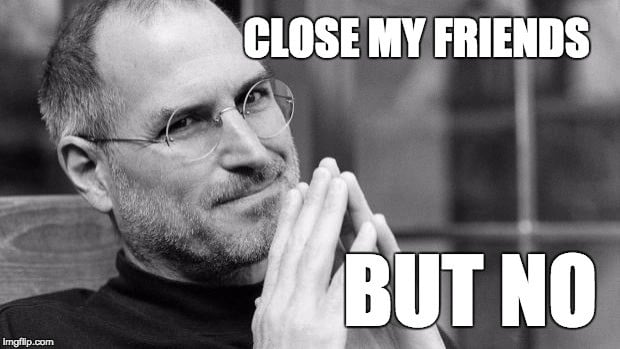
Saber lo que los clientes querrán usar, hace falta:
- intelligence 💡
- empathy 👂
💭 ¿Nueve de cada diez empresarios son tontos o simplemente no escuchan?
Demasiadas startups no consiguen atraer a los primeros usuarios que tanto necesitan. Se esfuerzan por ser notables, pero acaban destacando por su mediocridad.
⚠️ You don’t get away with mediocrity.
Your customers deserve better. The world deserves better.
TL;DR
- el enfoque lean es la mejor manera de encontrar el ajuste producto-mercado
- y un modelo de negocio escalable
- tu MVP está pensado para conquistar a los early adopters y cruzar el abismo.
- pero los MVP a menudo resultan mediocres
- because entrepreneurs don’t listen to what the market is telling them
- y luego no cruzar el abismo
Customer validation kinda sucks 🤔
The lean approach was brought into the world so startups could nail product-market fit asap. And yet the lion’s share is still fucking it up.
What’s missing here? 🤔
Los empresarios están haciendo un trabajo de mierda para averiguar lo que quiere el cliente.
Ahora bien, ¿qué es lo que le ayudará a comprender mejor un mercado?
🥁…🥁…🥁
Market research 🤓.
Probablemente no los fuegos artificiales que esperabas.
Sin embargo, me refiero a los estudios de mercado de 2017.
Not surveys. Stay away from surveys 👎.
Didn’t we just agree that Steve wants you to figure out what your customers want without them telling you?
Let me break down real quick why surveys suck for customer validation 🙅:
- 💣 Surveys are faceless. Customer development is about understanding people’s pains and needs. There’s no way they can tell you about those by ticking off some checkboxes.
- 💣 Surveys only tackle what’s already on your mind. You think your idea is epic and you’ll design your survey to see that confirmed. These presumptions will make you miss out on a lot of insights customers can give you. And are you so sure you know the right questions to ask?

- 💣 Surveys lack context. Do you know who you’re talking to? Segmentation is critical. How do you know if it’s good or bad that 20% confirmed your idea if you have no tangible idea of who they are and what makes them tick?
- 💣 Surveys don’t allow for proper follow-up. The whole idea of customer development in the lean approach revolves around finding paying customers for your MVP. Surveys don’t give you the opportunity to build relationships with potential customers.
Individuals are honest only to the extent that suits them, including their desire to please others.
💬 Dan Ariely in ‘Predictably Irrational’
- 💣 Surveys don’t predict future buying behaviour. Surveys measure rational motives, but human decision-making is determined by a lot of factors, a lot of which are not conscious or rational. People think they act out of ratio, while in fact they often just rationalise actions they did for reasons they can’t articulate. So even if people say they will buy your product on your survey, doesn’t mean they actually will. If you’d like to dive deeper into this, check out Thinking Fast & Slow by Daniel Kahneman and Predictably Irrational by Dan Ariely.
De hecho, la validación del cliente en el Lean Startup parece ser más bien un concepto abstracto.
Joel Gascoigne de la herramienta de gestión de redes sociales Buffer validó su idea por “simply tweeting the link and asking people what they thought of the idea.”
He then goes on saying 💬:
I got some useful feedback via email and Twitter, I considered it “validated”. In the words of Eric Ries, I had my first “validated learning” about customers.
¿De verdad? 🙄
Some buddies of yours cheer you on and — hallelujah — the idea is validated?
Por supuesto, Buffer resultó ser un gran producto por el que mucha gente está dispuesta a pagar, pero difícilmente se puede llamar a eso una técnica de validación.
The Lean Startup dictates you should validate your idea as quickly as possible and then build from there. But what is validation, really? 🤷
People saying something is a good idea doesn’t mean it is and it sure as hell doesn’t mean they’ll buy it.
But if you’re all psyched about your amazing idea, you’ll settle for that and start building. Of course you will 😉.
And that’s how you get Mediocre Viable Products that don’t take off.
👉 Suicidio de inicio.

Or how about this 👇.
That is as sweet as honey 🍯.
But does it mean your idea sucks if you don’t get that? 😐
Not every idea is going to go viral. There’s also a big difference between someone giving you their email address and someone giving you money.

La cuestión es ésta:
La validación del cliente, tal y como se prescribe en el Lean Startup, es, como mínimo, incompleta. Una validación deficiente conduce a MVPs defectuosos que no consiguen tracción.
¿Quién sabe cuántos grandes productos no han visto nunca la luz por culpa de una versión mínimamente viable construida sobre una validación deficiente por parte de los clientes? ¿O al revés?
You’re just not listening. You’re drunk in love with your baby-girl/boy idea and are looking everywhere for signs you should pursue it.
You’re just seeing whatever you want to see 😍.
Se trata de casos de prejuicio cognitivo, más concretamente prejuicio de confirmación y falacia de exceso de confianza.
It’s okay that you have that. Everyone does. It’s how your brain works and inherently human. The only way to cope with these blindspots, is to acknowledge you have ‘m and work your way around.
Oh, and if you’re one of those “yeah, yeah but I’m different” — kind of people, you’ve already lost.

TL;DR
- los empresarios son pésimos a la hora de averiguar qué quiere el cliente
- they’re missing market insights
- la validacion del cliente tal y como la prescribe el enfoque lean es una mierda
- las encuestas apestan
- toda idea se vuelve viral
- email opt-ins don’t equal money
- Una validación deficiente conduce a MVPs defectuosos que luego no consiguen tracción.
- they’re prone to cognitive bias, clouding your vision
Minimum Viable Audience 👨👩👧👦
There’s a better way ☝️.
En lugar de crear un producto para un público potencial, empieza a crear un público para un producto potencial.
Today’s Internet is the entrepreneurial gift from heaven for its ability to give you live insights in what the world in all its complexity is thinking and feeling at any time.
La gente le contará sus problemas, deseos y necesidades sin que usted se lo pida. Siempre que se tome el tiempo necesario para buscar 👀.
Real-time market research 🕵️. Eat that, surveys.
Utiliza las redes sociales y las comunidades de Internet para escuchar antes de empezar a hablar. Conoce a las personas a las que te diriges para crear algo que realmente quieran y por lo que estén dispuestos a abrir la cartera.

Find your audience — the people you can and want to help — and connect with them.
Sé una mosca en la pared, mantén los ojos y los oídos abiertos. Luego entra y participa.
Pregúnteles por sus penas, conozca los problemas que les preocupan y averigüe qué es lo que necesitan.
You’ll find this knowledge to be incredibly powerful.
Not only are these people discussing the exact problems you’re looking to leave your mark on, they’re also using the language typical for your niche.
Every conversation will make you more of an expert and increase your ability to create unique value 👨🔬.
Once you’ve immersed yourself in the tribe, its time to start building your influence by giving to the community.
Su juego consiste en aportar valor. Todavía no en forma de producto, pero sí de contenido que:
- helps 🤝
- inspires 💡
- delights 😊
- entertains 🤹.
Sin esperar nada a cambio.
One of the key things we’re learning is that you need to build an audience before you build your product. Build your audience not for marketing, but for learning.
Fundador QuickSprout y CrazyEgg
You’ll be learning directly from a real group of people as they react to relevant triggers — your content — instead of trying to garner a strained idea from generic market research based upon vague lean startup validation techniques.
These are real people who’ll pay attention to you, with real pains 🤕 you can solve and real goals 🥅 you can help them achieve 🏆.
The cues you’ll get from your audience bouncing back off your content will give you the ingredients to cook up a minimum viable product that is Exceptional (EVP) rather than Mediocre (MVP) and gets the early adopters all lyrical, ready to bring you across the chasm 😏.
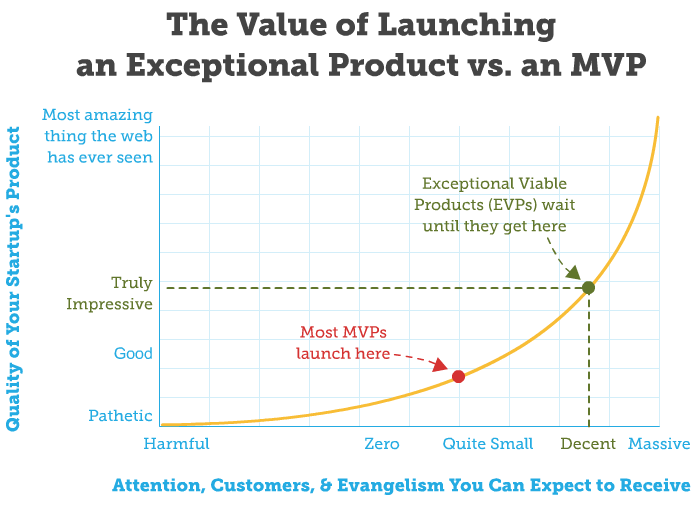
Even if your EVP doesn’t get the traction you hoped for, you’ll still have a loyal audience coming back because you’re feeding them value and helping them advancing in whatever it is they care about.
Puede mostrarles wireframes, presentaciones de diapositivas, páginas de aterrizaje, mockups u otras muestras de productos de bajo riesgo y ver cómo reaccionan.
If you can pull off building yourself an engaged audience, you’ll have a focus group that will do the heavy marketing lifting for you 💪.

La mayoría de la gente empieza con algo que quiere vender y luego tiene que averiguar cómo venderlo y a quién vendérselo.
With an audience, you’ll have your customers sitting in your backyard, waiting for your next big thing.
They’ll be your compass, able to get you back on track as soon as you go off the rails. If they’re suddenly responding less, it could mean you’ve lost touch and need to re-adjust your focus.

The beauty is that maintaining an audience requires minimal effort because it’s just about being human. You’re talking and listening. You’re connecting with other human beings, which is what both life and business are ultimately all about.
TL;DR
- en lugar de construir un producto para un público potencial
- construir una audiencia para un producto potencial.
- las redes sociales y las tribus de internet permiten realizar estudios de mercado en tiempo real
- encuentra a las personas que puedes y quieres ayudar
- tu público te dirá lo que quiere pagar
- construir un EVP (Producto Viable Excepcional) en lugar de un MVP
- mantener una audiencia es fácil
- it’s talking, listening — and just being human
Why giving is your superpower 💫
You do have a magical superpower 👉 Generosity.
It also goes by the name of altruism. Or selflessness 💁.
🎁 Dar valor de forma gratuita.
Sounds a tad contradictory to the transactional nature of business? 🤔
Never in the history of the world has there been someone who has given away too much. It’s one of the things that sets apart líderes de los seguidores.
Most people just laugh when they hear that the secret to success is giving . . . Then again, most people are nowhere near as successful as they wish they were.
💬 Bob Burg and
John David Mann
‘The Go Giver: A Little Story About a Powerful Business Idea’
When you give away value so good you could have charged money for it, you show you’re in the business of helping people rather than helping yourself.
This is selfless goodwill — you give something without expecting anything in return. People will admire you for it.
Giving builds your ethos — the authority, credibility and honesty that comes with your message and is essential for persuasion.
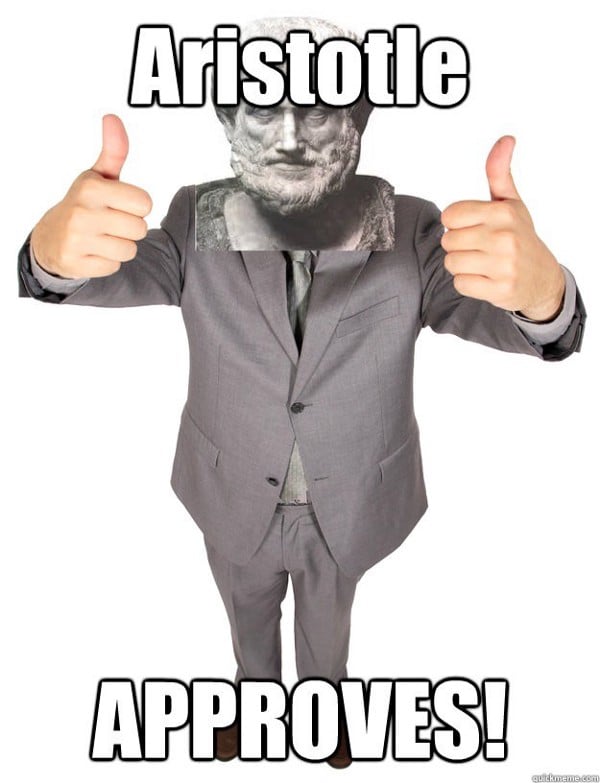
It’s how Aristotle and his old Greek friends rolled when they wiped the floor with their debate opponents in Athens.
Dar aumenta tu capacidad de influir y, por tanto, de vender.
✋ What’s more: humans are wired to repay generosity.
Try sending out a batch of Christmas cards to complete strangers 📬. You’ll be amazed by how many you’ll get back. From people you have never met.
Esto fue un experimento social real en 1976.
Philip Kunz y Michael Woolcott enviaron 578 tarjetas de Navidad a completos desconocidos y recibieron de vuelta la friolera de 117.
Tasa de respuesta 20%. Los vendedores matarían por eso hoy en día.
If you give people exceptional value regardless of whether they ever pay you a dime, they’ll feel a need to repay you one way or another.
By choosing you over a competitor, for example 😎.
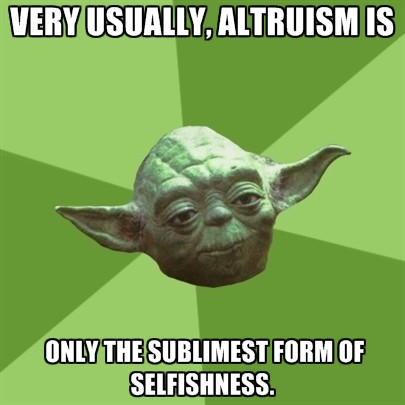
So. No cutting corners, no holding back, no being stingy.
👉 Help, inspire, delight & entertain.
Give. At every step of your prospect’s journey.
Blog posts, podcasts, videos, ebooks, whitepapers, webinars, online courses.
Whatever your audience likes best 👉 go all-in and make it high-quality.
- 🖐️ Giving allows you to connect with customers without pitching. They’ll lower their walls because they’ll know, like and trust you.
- 🖐️ Giving pulls people towards you. No desperate cries for attention needed, just magnetic superpowers.
- 🖐️ Giving will make you a trusted authority in your field.
There are two kinds of people: eaters and bakers. Eaters think the world is a zero-sum game: what someone else eats, they cannot eat. Bakers do not believe that the world is a zero-sum game because they can bake more and bigger pies. Everyone can eat more. People trust bakers and not eaters.
La gente compra y recomienda a personas que conoce, le gustan y en las que confía.
Esta es una verdad universal.
It was true in Dale Carnegie’s time when he wrote the all-time bestseller How To Win Friends and Influence People and it’s true today.
Customers aren’t looking for a sales pitch.
They’re looking for solutions to their problems.
Give it to them and you’ll be their hero 🌟.
High-value content is a low-threshold way of helping your target group while learning where you can make a difference. It’ll help you build a loyal audience that trusts you to solve their problems.
The very best thing you can do as a startup founder is to earn a reputation for helping others.
If you help people advance in whatever they care about, they’ll respect you, they’ll trust you, they’ll engage with you, they’ll want your help, they’ll seek your opinion, they’ll share your content. And they’ll buy from you.
TL;DR
- la generosidad/altruismo/altruismo es tu superpoder
- regalar valor
- it’s one of the things that sets apart leaders from followers
- dar aumenta tu capacidad de influencia y, por tanto, de venta.
- la gente sentirá la necesidad de corresponderte
- la gente compra y recomienda a gente que conoce, le gusta y en la que confía.
- build your klt — factor with content that helps, inspires, delights and entertains
“I already have a product, dumbass” 🙃
You’re probably reading this because you’re looking to get some actionable advice on how to market your startup for maximum growth 📈.
Y aquí estoy yo predicando supuestas sabidurías sobre cómo deberías haber jugado tu juego de marketing mucho antes de tener siquiera un producto.
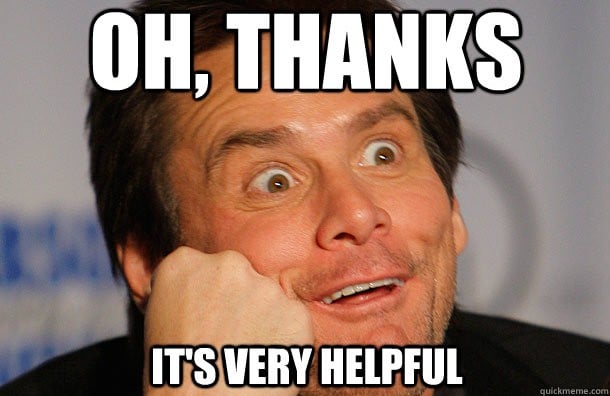
No te muevas, que viene lo práctico.
Este extravagante fragmento de texto es el prefacio de una serie de artículos que pretenden guiarle por la salvaje jungla del marketing B2B en línea.
En las próximas semanas publicaré guías sobre cómo matarlo con:
- Comunidades de Internet
- Correo electrónico en frío
- … and whatever I still come up with (feel free to pitch in my idea pool)
But this right here, this value-audience fit stuff, is your skeleton key 🗝️.
It’s the One Key To Rule Them All 👊.
All of the guides I’ll be writing, all of the actionable advice will be built on that one guiding principle of building yourself a fanbase by giving value to people that value is of value to.
Canales y plataformas como Facebook, LinkedIn, Google, el correo electrónico son sólo naves que puedes desplegar para hacer llegar tu valor a tu audiencia.
And here’s the thing.
⚠️** SPOILER ALERT: HERE’S WHERE IT BECOMES RELEVANT TO YOU**⚠️
Si las startups pueden hacer estas cosas desde cero, piensa en el potencial si ya tienes una base de clientes.
Pero una base de clientes no es una audiencia todavía.
❓ Ask yourself.
¿Qué le hace único? ¿Qué valor estás aportando?
¿Cuál es tu campo? ¿Qué te hace un rey?
¿A quién estás ayudando? ¿A quién le estás dando valor?
¿Para quién estás escribiendo contenido? ¿Para quién estás creando tu producto?
Can’t come up with an answer?
👍 Bien.
Now you know why no one is reading your blog posts.
Why only your mom likes your Facebook updates.
Why you’re getting so much hate on your cold emails.
Why your website traffic isn’t going up.
Why none of your trial users starts paying.
👉 Ahora ya sabes cuál es el problema.
Deja de enviar correos electrónicos en frío al azar a la gente pidiendo atención.
Deja de poner un millón de páginas de destino para ver qué se pega.
Deja de publicar sin sentido en Facebook, LinkedIn, Twitter e Instagram.
Deja de tirar el dinero por el desagüe de Facebook Ads y Google Adwords.
Deja de buscar trucos de magia y victorias rápidas.
✋ Empezar de cero.
Encuentra el área de problemas en la que puedes ser el rey de las soluciones y construye un reino de valor sobre ella.
Not sure if you’re so unique? 😯
Double-down on your topic until you’re an authority to be reckoned with on something you truly know and care about. Pursue your curiosity and you’ll find the path that’ll make you unique 🌟.
TL;DR
- construir una base de fans aportando valor es la clave del marketing online
- próximamente más material práctico.
- mientras tanto:
- ¿Qué te hace único?
- ¿A quién das valor?
- dejar de buscar trucos de magia y victorias rápidas
- encuentra dónde puedes ser rey y construye un reino de valor sobre él.
Lean from the best 👑
I didn’t invent this stuff.
I’m just the clown reporting it.
Ya se ha hecho antes y se ha hecho bien.
Algunas de las startups más exitosas de la actualidad construyeron sus reinos a base de ofrecer contenidos de gran valor en lugar de triunfos rápidos y trucos de crecimiento.
If you don’t take my word for it, take theirs.
1. Kissmetrics 📊
If you’ve been reading stuff on online marketing and startups, there’s no way you don’t know about Kissmetrics, marketing analytics software.
Founded by content marketing kings 🤴 Hiten Shah and 🤴 Neil Patel Kissmetrics started blogging around 2009. Long before their product was launched.
Para ello, identificaron a sus compradores y crearon contenidos que les ayudaran.
Today, about 9 million online marketers, founders, CTOs,… read their posts every month. Todo su negocio se basa en ello 🚀.
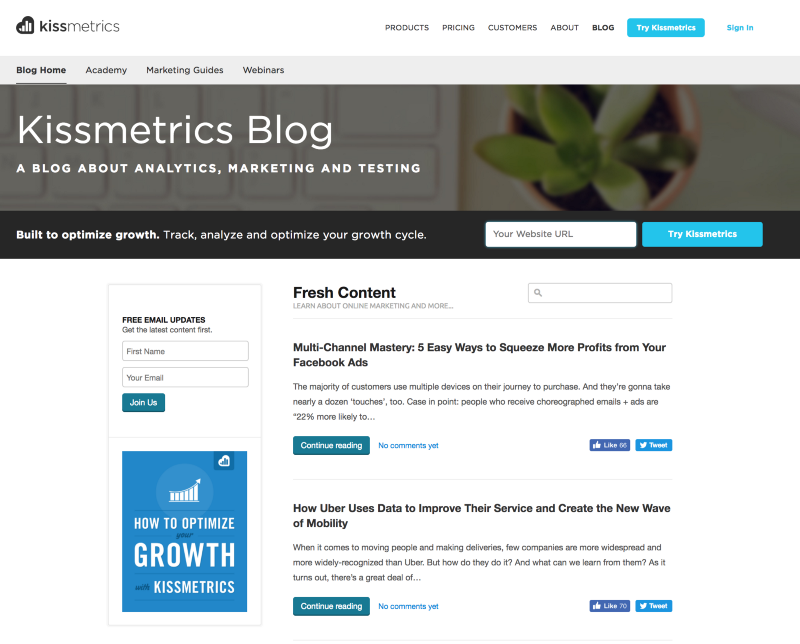
It shows you the unparalleled power of blogging to slow-cook an idea into a readers’ head.
I couldn’t see myself using anything else than Google Analytics. It’s easy, it’s good and it’s free. Why would I change? 🤔
But while making my way through startup marketing, I found myself regularly reading well-written posts over at Kissmetrics’ blog.
Not just stuff like ‘Key Customer Metrics You Need To Be Tracking’, but also How Search Rate Is Killing Your Conversion Rate (And How To Fix It) and Effective SEO For All Stages Of The Conversion Funnel.
Están por todas partes. Su contenido te ayuda de verdad a hacer crecer tu negocio. These guys must know what the hell they’re doing 😯.
Así que, en algún momento, se me fue la mano.
Today, I’m not only using Kissmetrics, I’m recommending it to other people.
Actualización: Desafortunadamente, Kissmetrics fue vendido y el blog fue retirado de la red. Parte del blog se trasladó a neilpatel.com, pero ninguno de los artículos mencionados anteriormente siguen vivos.
2. Caza de productos 😼
What cool products are you using?
It’s a question we all ask and it turned out to be one hell of a community builder: Product Hunt.
Product Hunt is the little baby of Ryan Hoover. Ryan is one of those guys who just friggin’ loves everything new and cool ✨.
No sólo por diversión. Para Ryan, los nuevos productos son una oportunidad de aprender y, sobre todo, una forma de relacionarse con personas afines.

Para averiguar si podía crear una comunidad en torno a este tema, Ryan Hoover empezó con un boletín por correo electrónico con las mejores novedades diarias.
Within two weeks, Ryan’s little mailing list had 170 subscribers geeking over new products discovered by 30 hand-picked contributors, among which startup founders, VCs, and prominent bloggers.
Today, Product Hunt is Silicon Valley’s favourite little playground. A tightly-knit community of like-minded geeks who bond over anything hot 🔥 and the new ✨. Tech, but also books, podcasts and games — you name it.
3. Moz 🔍
Here’s what Rand Fishkin, founder of SEO software Moz, has currently pinned on his Twitter wall.
¿Ves lo que quiero decir? 😎

Al igual que Kissmetrics, Moz se creó a partir de un blog.
For the first 18 months, they built an audience with little free tools and downright legendary SEO for beginners guides 📚.
These guides have been around for more than 12 years now. They’re being continuously updated and are still pulling in new customers every day.
En el momento en que comenzaron sus suscripciones en 2007, Moz tenía una audiencia de alrededor de 10k vendedores que utilizaron para afinar y hacer crecer su valor.
By 2008–2009, Moz was pulling in subscribers from far beyond their own community. Today it is one of the leaders in SEO software.
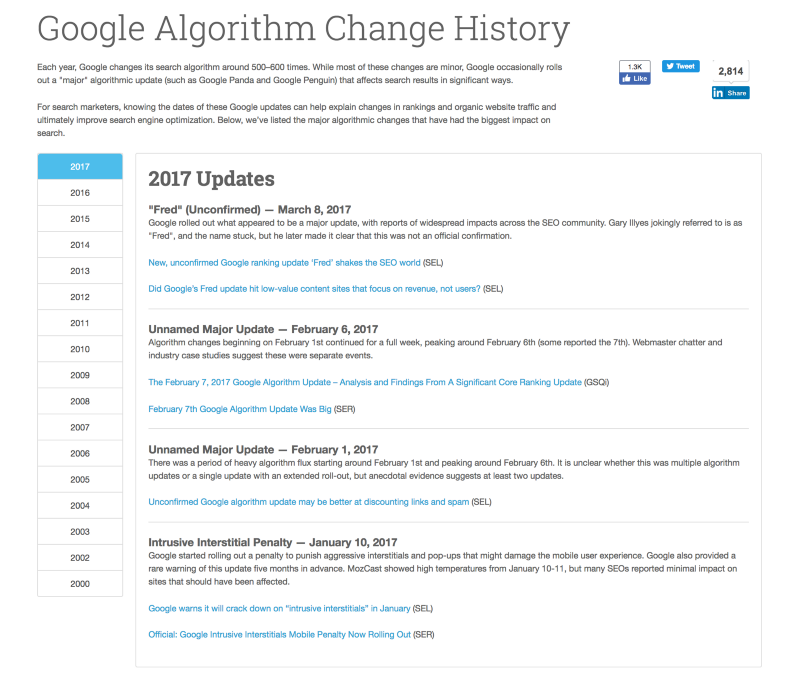
Moz is also known for staying right on top of its industry with thorough research. They’re famous for annually documenting changes in Google’s algorithm and teaching on how to go about those changes. It’s a unique resource that gives them invaluable thought leadership 💭.
Without that “marketing first” approach, I’m skeptical if we ever could have gotten a product off the ground.
💬 Rand Fishkin — Founder of Moz
Rand volvió a perseguir sus creencias en la creación de comunidades como marketing cuando se asoció con HubSpot para crear Inbound.org, una comunidad para profesionales del marketing online.
4. HubSpot 🎯
HubSpot es un imperio del marketing construido sobre valores de todo tipo.
Entre otras cosas, estos chicos son campeones en lo que se refiere al marketing de proyectos paralelos. Crean pequeñas herramientas gratuitas que aportan un gran valor a mucha gente.
El ejemplo más famoso es WebsiteGrader, una herramienta que te dice lo bien que va tu sitio web en métricas clave como rendimiento, preparación para móviles, SEO y seguridad. Gratis.
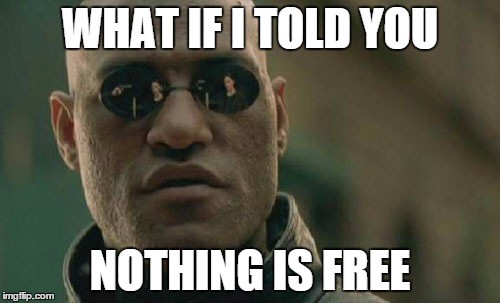
It goes without saying HubSpot’s software offers you the solutions to pain points that may emerge from WebsiteGrader. They’ll make sure you know about that with drip email campaigns 💦 and quality content 📚.
HubSpot is big on content. They have a whole library of free ebooks on inbound marketing topics. They complement those with checklists 📋 and templates 📝 to get their audience to really act on those guides and push them further down the sales funnel.
The Next Big Thing… 💯
Now that you’re all hot and ready to get cracking on that audience…🔥
I’ll have you wait for a week to show you how to go about that 😛.
💬 We’ll talk about:
- how to find a field where you be of value in 🤴
- how to find your audience where you can be of value to 👨👩👧👦
- how to make sure the things fit together like they were meant for each other, forever and ever 💏
Make sure to subscribe so you don’t miss anything 😏.

Esperamos que le haya gustado este post.
If you did, hit ❤ to spread the word!
For more hot stuff on startups, growth marketing and sales
👉 suscríbase aquí
👉 siga a @salesflare en Twitter
- Los 20 mejores libros de ventas que probablemente esté leyendo Elon Musk - 14 de febrero de 2023
- 6 formas infalibles de conseguir para tu startup sus primeros 100 clientes - 6 de diciembre de 2022
- Cómo construir un embudo de ventas que venda - 2 de septiembre de 2021
